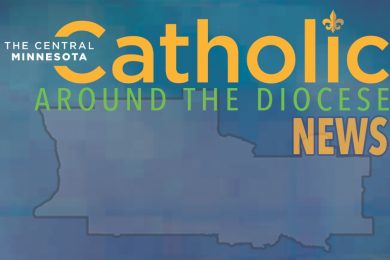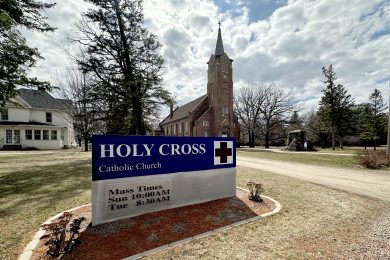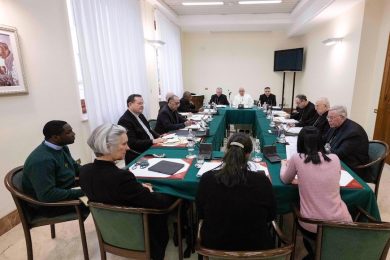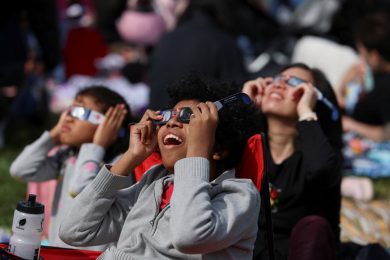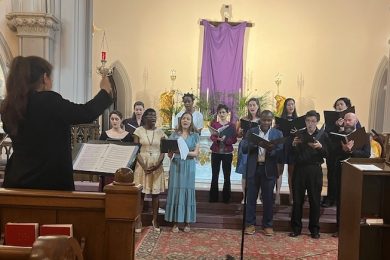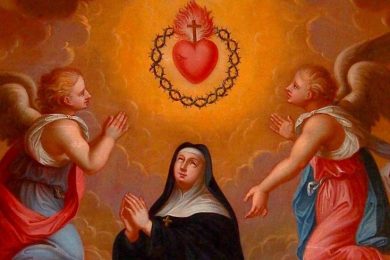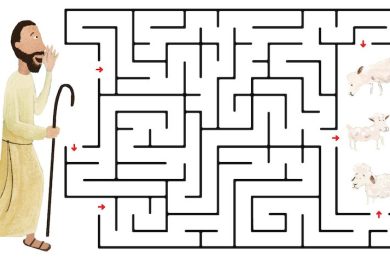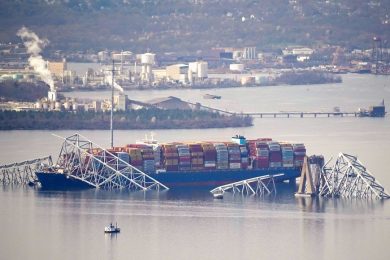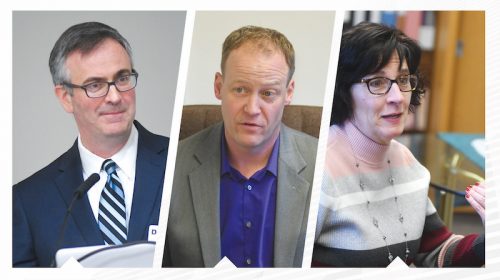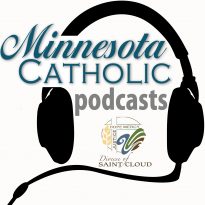Each month, The Central Minnesota Catholic features a big question the Church is facing. February’s big question is, “What does the future hold for Catholic schools?” Contributing to the conversation are: Dr. Thomas Burnford, president and CEO of the National Catholic Educational Association; Christine Friederichs, principal of St. John’s Area School in Foley; and David Fremo, diocesan director of Catholic Education Ministries.
Q: Catholic parochial schools have a long history in our country. How have they benefited the Church and our country as a whole?
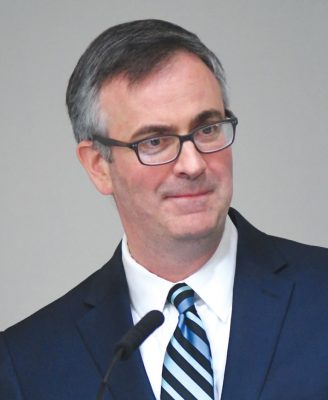
BURNFORD: Starting with St. Elizabeth Ann Seton, whose memorial we celebrated [Jan. 4], Catholic schools have educated literally millions and millions of citizens in this country and provided them with an excellent quality education. But more than that, it is an education that is rooted in faith. And when you combine the two — academic quality and integration of the faith — you end up with people who live well and who benefit society in a huge way. The impact is enormous, and there are people with a Catholic school education in all walks of life doing wonderful, wonderful work. And that has been the case since the 1800s and since St. Elizabeth Ann Seton. … We also know the Catholic school students are more likely to pray daily, to attend church often, and to retain a sense of lived, active faith.
DAVID: Thinking about central Minnesota and the Midwest as frontier communities, parochial schools in particular served as a way to stabilize and form communities, to have them go from being villages to towns to cities, to enable trade by forming a new basis and a home for people of diverse cultures. In central Minnesota, of course, that was dominated by German immigrants. But as you start to branch out of the center of the state, you find Polish immigrants and Irish immigrants, all learning to find a new home that was really based around not just re-assimilating the culture they left back home but being able to forge something new in a country that really needed something that could stabilize that force.
CHRISTINE: Most of my knowledge of the history of our Catholic schools is based on the hard work of the sisters, the brothers and the clergy. It’s a very beautiful history of their dedication to educate and bring the Catholic faith to children. I would also add that, historically, schools and churches were the main source of social events for families and communities to stay connected.
Q: A few years ago in one of his columns, Bishop Kettler wrote that Catholic schools are, and have always been, essential to the Church’s evangelizing mission. Do you agree with that assessment?
 BURNFORD: Absolutely. The Church itself exists to evangelize, as we are told in [St. Paul VI’s apostolic exhortation] “Evangelii Nuntiandi,” and Catholic schools are an integral ministry of the Church and share in that evangelizing mission. In Catholic schools it happens in two ways. The first is that the school community itself gives witness to the Gospel lived out through joy, through truth, through community and, referring back to what David was saying about original pioneering communities, that sense of belonging. They give witness to a lived faith. And, secondly, the well-formed graduates go out and live their life with witness and with truth, because they know the truth of the Gospel and they are more likely to be able to share that truth practically with others in word and deed. I would absolutely agree that they’re essential to the Church’s evangelizing mission.
BURNFORD: Absolutely. The Church itself exists to evangelize, as we are told in [St. Paul VI’s apostolic exhortation] “Evangelii Nuntiandi,” and Catholic schools are an integral ministry of the Church and share in that evangelizing mission. In Catholic schools it happens in two ways. The first is that the school community itself gives witness to the Gospel lived out through joy, through truth, through community and, referring back to what David was saying about original pioneering communities, that sense of belonging. They give witness to a lived faith. And, secondly, the well-formed graduates go out and live their life with witness and with truth, because they know the truth of the Gospel and they are more likely to be able to share that truth practically with others in word and deed. I would absolutely agree that they’re essential to the Church’s evangelizing mission.
I do think one important distinction is that it’s difficult in this day and age to balance parents’ desire to keep their children safe, not just physically, but also safe from what some might call the big bad scary world out there. And so, in some sense, a Catholic school needs to protect students from influences of a secular culture, bad influences. Yet, at the same time, that school needs to help the students go out into the world well-prepared to confront the culture, to change the culture, to proclaim and witness the Gospel and live differently with morals and with values. And there’s a healthy tension there between, “Do we build bigger walls around our schools, or do we break down the walls and make the school a more integral part of the community and go out and evangelize?” Our Holy Father has been very clear on this. As we wrestle with the potential for inward looking versus outward looking, serving our own and serving others, I think Catholic schools need to think deeply and ponder the call of the Church to both evangelize and hold fast to our beloved traditions in the truth.
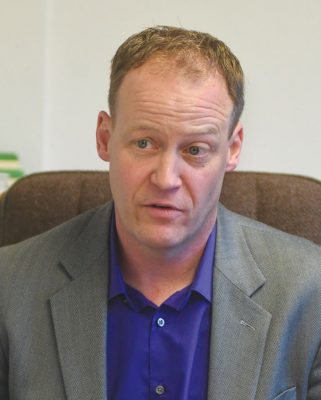
DAVID: Our schools really have an opportunity to do something, to gather around a purpose that endures and that keeps people there and that sustains them. I do think that it’s a difficult thing for us today, in the noise of trying to brand our schools and espouse our values, to help people see that there’s something that’s different about this. We’re not trying to elicit a way of talking about what we believe and the goodness that we see in the world that is simply going to be attractive to somebody and hope that they come and participate in it for a while. We are really seeking in our schools to make experiencing the Gospel as normal, to say that this is the normal way that people are called to live. It’s not the extraordinary way for people to live. This is what we’re all called to.
CHRISTINE: I was very excited when I read that statement from the bishop! As an educator for over 30 years, teaching as well as in administration, I have strongly believed and discussed how important and connected Catholic schools are to evangelizing the Church’s mission. Sometimes this concept falls on deaf ears, but I thoroughly believe that it needs to be brought up and revisited many times. Our Catholic schools, along with our students and families, are essential to the Church’s mission.
Q: Dr. Burnford, over the last 10 years, what sort of shifts have you seen in Catholic schools nationwide?
BURNFORD: We’ve seen a number of shifts. The most concerning one is the decrease of enrollment — a 20 percent decrease in enrollment over the past decade. And part of that is populations have shifted and moved. We do have in many ways too many buildings in the Northeast and not enough in the South and the Southwest and the West. And it is hard to move a school building. We have struggled with increasing costs of educating students, particularly as the religious system on whose backs the school system was built have retired and moved on, and our need and desire to pay a fair wage to lay teachers who carry on this wonderful, wonderful ministry.
I think a big challenge is the lack of access to public funding. It is fundamentally unjust that the tax dollars that come from everyone for education are restricted to public schools, or so-called public schools. My kids are members of the public, and they go to Catholic school and they don’t have access to those funds. We are big supporters of parental choice programs and legislation in 26 states and growing around the country, which is an essential element to overcome some of the financial challenges for Catholic schools.
But we also face challenges in terms of decreasing baptism rates and sacramental participation rates. The Church itself has struggles, in terms of really actively proclaiming the faith to a new generation and welcoming people in.
[perfectpullquote align=”left” bordertop=”false” cite=”” link=”” color=”” class=”” size=”16″]“Historically, schools and churches were the main source of social events for families and communities to stay connected.” — Christine Friederichs
[/perfectpullquote]At the same time, we see, a deep sense of belonging on the part of those who do participate in Catholic schools. And that belonging, it’s the same belonging that David referred to in the pioneer community, particularly the immigrant communities that came over together, and wanted to be together and built that life around the Catholic schools. The separations in the world around us today, the insular nature of family, the lack of community, makes the longing for true belonging all the more important. And Catholic schools are, along with their parishes, really a beacon to that. When I visit schools, I find that parents love their Catholic schools because they have a sense of belonging, and meaning, and broader family, which is really critical. And Catholic schools are being much more intentional about that in providing events for parents and opportunities to gather, and welcoming new parents, which is an essential growth element.
I do think it’s also important to note that academic quality in Catholic schools has always been high. But more and more we can now demonstrate that through effective assessment and curriculums that in many cases can be compared to public school counterparts. We just published the [National Assessment of Educational Progress] results for Catholic schools, and once again Catholic schools outperform other schools significantly. But it’s important that we can demonstrate that to parents in this day and age, locally and nationally.
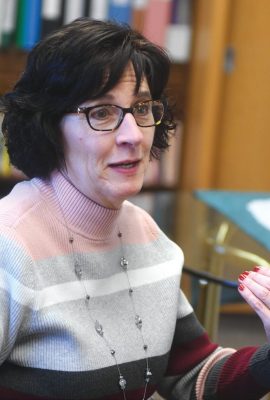
CHRISTINE: Like Dr. Burnford said, there’s been a decline in enrollment and closing of schools. In the last 30-some years I have seen that decline with our schools struggling to increase enrollment, keep tuition affordable and pay just salaries. We work hard to provide excellent education programs that appeal to parents and encourage them to embrace these small Catholic schools and their loving environment. A few times over the years, I’ve heard parents say that the reason for not choosing a Catholic school is because the other schools “are good enough.” That mindset of “good enough,” saddens me! If you could, why wouldn’t you strive for something better for your child such as a faith-filled atmosphere, great test scores and a small loving environment? I think Catholic schools provide a great opportunity, better than “good enough.”
A challenge for me as an administrator and for the local area Catholic schools is our low salaries. I struggle to retain teachers and to find new teachers because we are at a big disadvantage with the higher salaries in the public schools. It is difficult to find sustainable income to pay our teachers what they deserve. As a result, we need to look for teachers who have the passion to be in a faith-based environment, work in a small setting and can afford to work for a lower salary. And that is a big undertaking! Unfortunately, for a rural school, finding and retaining teachers is beginning to require more effort than finding students to increase enrollment.
I have been very fortunate to have received my master’s degree in my later years, and as a result have been blessed to meet young Catholic educators from all over the United States who are half my age and are on fire for Catholic education. I find networking and learning from these young educators extremely exciting. They have given me great hope for the future of Catholic schools.
Q: David, you are no stranger to Catholic education, but you’re brand new to the role as director of Catholic Education Ministries. In regard to Catholic schools, what are some of your goals?
DAVID: The broadest picture that I can paint is that it’s really to make our Catholic schools more visible, more viable. I think that’s part of what we reallyable to demonstrate the public good that our schools are. Not simply for the families who have the privilege of attending, but for the contributions that are being made locally and at state, national and global levels.
I see a couple of ways that I’m really going to strive to do this. It is easy, especially in a diocese where things are so spread out, for schools and school leaders to really feel like they’re shouldering this all on their own. One of the things I strive to do in this office is to see that we grow in our common purpose. We really have to be united in purpose and understanding to sustain our communities and to grow, to see that we’re in this together. That means for me that I really have an awful lot to learn from our school leaders and our school communities about what we’re doing, what we can do to make this greater. We definitely need all Catholic schools to be stronger if any one is to be stronger.
The second part of that is expanding our vision. We have to be able to look outside of our communities to see that there are solutions that can be found and a lot of things can be appropriated to our situation right here. When I went back to graduate school, I went well outside of Minnesota because that’s something I felt like I needed, to be able to come back to central Minnesota and make contributions here. I think that’s something that we have to be able to give in some respects to all of our Catholic educators — to empower them to be able to live their gifts more fully, see new things and make new connections.
The third part is establishing clear goals to make that happen. It’s an enormous task but I think it really can be broken down into one initiative at a time. That’s where we’re going to see progress.
Q: The Hispanic population is continuing to grow in our area. How do you see the diocese reaching out to Hispanic and Latino families and inviting them to be part of our Catholic schools? How would that enrich our schools and parish communities?
DAVID: I think the important thing is that we do in fact invite “families” to be part of our Catholic schools. When we’re recruiting and when we’re reaching out, we need to always put the family first and not the individual. Our schools are partnerships with families, first and foremost. The really critical thing for us to recognize in Latino communities and cultures is that the family is the anchor and the glue. We need to draw on the strengths and the gifts that everyone brings to enrich our communities. We have folks who are deeply committed to their faith, to their families, to their work. They add to our human story through their life experiences and through their hopes and dreams. And if there’s something that our schools have to be always focusing on, it’s our common human story. That’s what sets us apart.
///////////////////////


